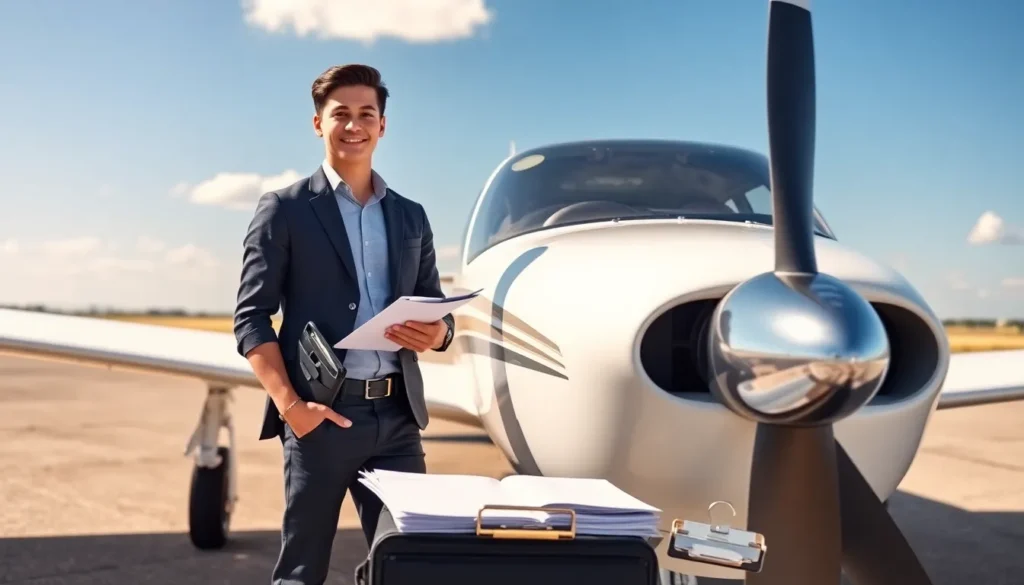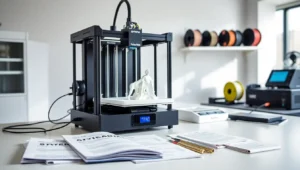Ever dreamt of soaring through the skies like a majestic eagle? Well, before you can strut your stuff in the cockpit, you might be wondering just how old you have to be to be a pilot. Spoiler alert: the age requirements can vary depending on the type of pilot’s license you’re aiming for. In this hefty sky-high guide, we’ll navigate through the clouds of age requirements, regulations, and even some crystal-ball gazing into the future of pilot age norms. Buckle up and let’s take off.
Table of Contents
ToggleUnderstanding The Age Requirements For Pilots

When it comes to flying, age is one of those crucial factors that can influence who gets to command a plane. But don’t worry: it’s not as complicated as assembling an IKEA desk, there are specific age markers for various pilot licenses.
Minimum Age For Private Pilots
To become a private pilot, one must be at least 17 years old. This age requirement allows aspiring aviators to grasp the theoretical knowledge while also getting valuable flying hours under their belt. By the time they hit that age, they would have likely experienced a mix of ground school and flight training, preparing them for both practical tests and the responsibilities that come with piloting.
Minimum Age For Commercial Pilots
Looking to turn your passion into a paycheck? Then you’ll need to be at least 18 years old to obtain a commercial pilot’s license. This age requirement ensures that pilots meet certain maturity levels needed to operate an aircraft for compensation. By this time, they should have completed advanced training and accumulated a significant number of flight hours, laying the groundwork for some serious flying.
Minimum Age For Airline Transport Pilots
If your dreams include flying for major airlines, the magic number rises to 23 years old. Airline Transport Pilots (ATPs) hold the highest certification in aviation, which means this license requires extensive flight experience and a complex understanding of aviation regulations. Think of it as the VIP pass of flying, it comes with a lot of responsibility and expectation.
Factors Influencing Age Requirements
Beyond mere numbers, several elements can influence age requirements for aspiring pilots. Let’s investigate into what these factors are.
Education And Training Considerations
A pilot’s journey often starts with education and training. Many young enthusiasts begin their flying careers in college programs or flight schools. These educational institutions may mandate prerequisites that can include advanced math and sciences, laying a robust foundation. But, the grounding in aviation isn’t just textbook: real flying happens in the plane, which is why age limits exist in the first place.
Medical Certification Age Limitations
Medical certification is a prerequisite for any pilot, and the age at which one begins this process can vary. Younger applicants need to meet certain health criteria, ensuring they can handle the physical demands of operating an aircraft. More stringent standards often apply as pilots grow older, reflecting concerns about health and cognitive abilities as they age.
Regulatory Bodies And Their Guidelines
Understanding the age requirements wouldn’t be complete without knowing which institutions lay down the law in aviation. Here are two of the primary regulatory bodies you should be aware of.
Federal Aviation Administration (FAA)
In the United States, the FAA sets the framework for pilot licenses. All rules and age limits revolve around the FAA’s regulations. Their guidelines ensure that safety and professionalism remain paramount in the skies. As they say, the skies might be limitless, but safety has its boundaries.
International Civil Aviation Organization (ICAO)
Globally, the ICAO offers a comprehensive set of standards and recommended practices for pilot certification. While individual countries may adopt these guidelines differently, the ICAO’s influence on age limits helps establish parity in aviation training and ensures that pilots across borders maintain high safety standards.
Future Trends In Pilot Age Requirements
As the aviation landscape continues to evolve, so too might the age requirements for future pilots. Grab your crystal ball: it’s time to look ahead.
Increasing The Accessibility For Younger Pilots
In a push to fill the growing pilot shortage, there’s talk of making flying more accessible for the younger generation. Some industry experts suggest lowering age requirements or offering dual programs where young teens can start their training earlier. This could morph the traditional pathways into more flexible formats, bringing fresh talent to the cockpit sooner.
Potential Changes In Regulations
Also, as technology evolves and training becomes more efficient, regulations may adapt alongside these changes. For instance, advancements in simulator training might allow younger pilots to gain experience while flying in controlled environments well before reaching age limits imposed by the FAA or ICAO.
While it’s important to ensure safety remains the priority, adapting regulatory frameworks to reflect modern realities could change the game for aspiring aviators.





